Should we parallelize?
Parallel Programming in R

Nabeel Imam
Data Scientist
Let's construct a building
Building a floor on top of the last one: sequential
Installing windows to finished structure: parallel

The sequential-parallel scale
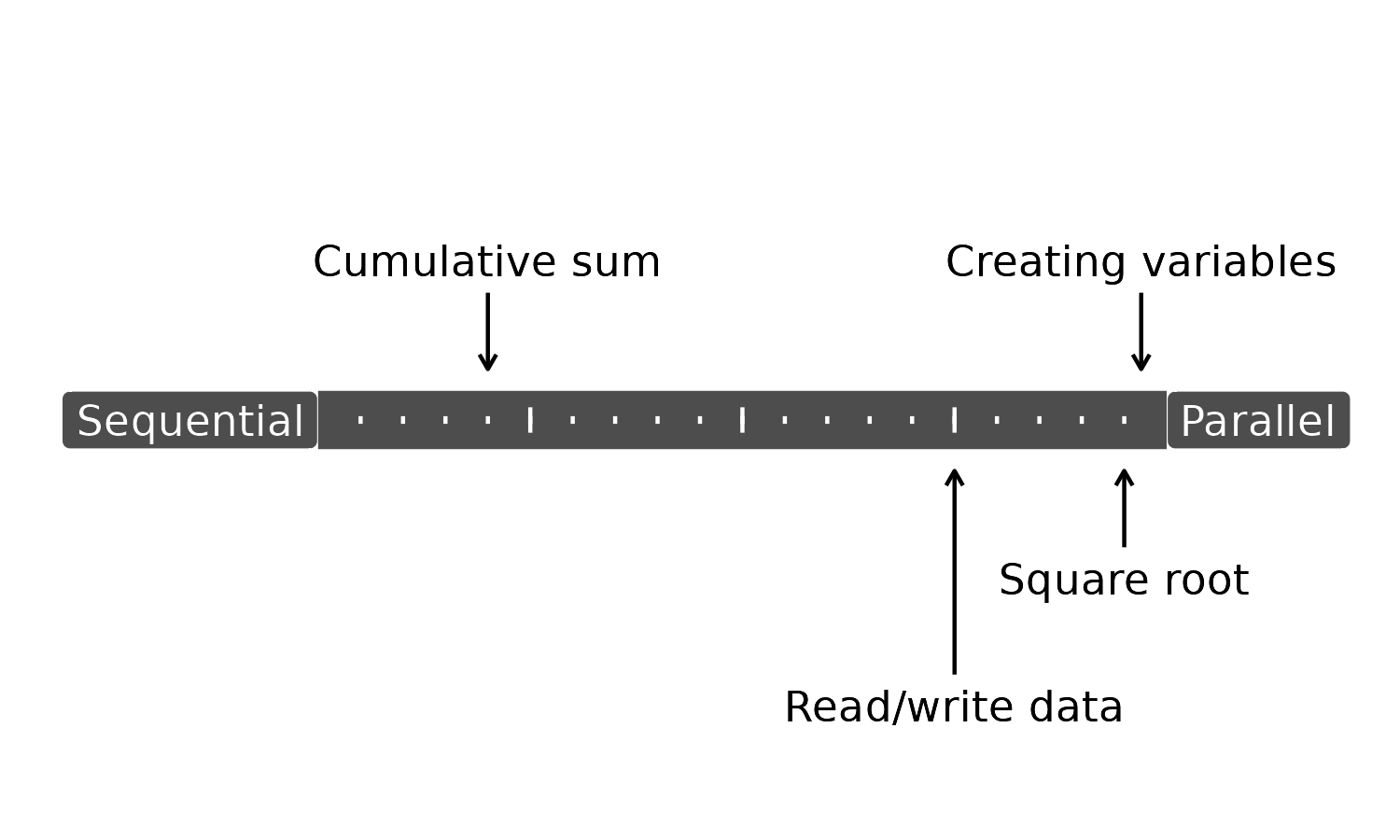
A classic numerical operation
Calculating the square roots of a million numbers
numbers <- 1:1000000start <- Sys.time() sq_roots <- lapply(numbers, sqrt) end <- Sys.time()end - start
Time difference of 1.044573 secs
How could we parallelize the square root?
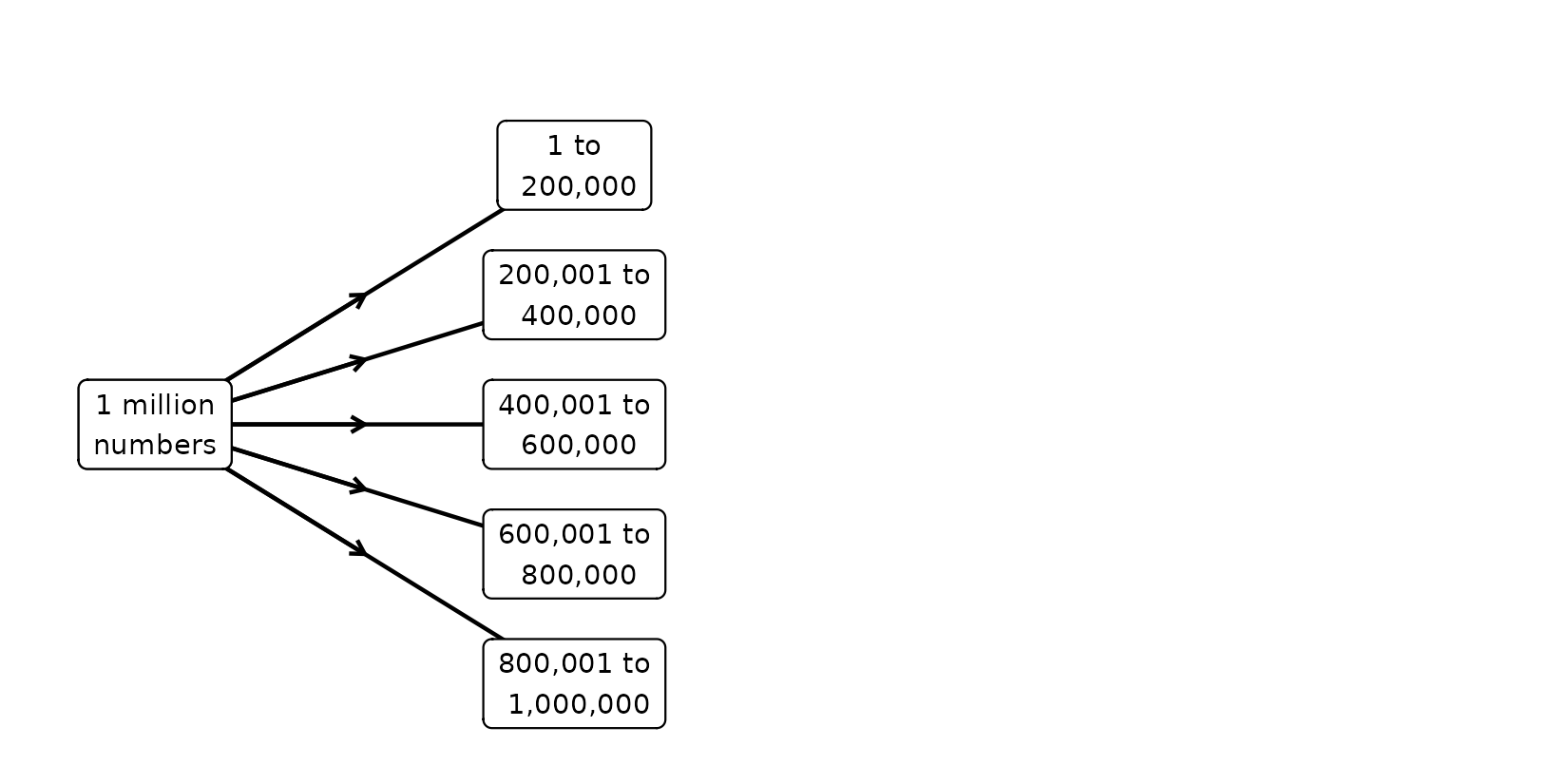
How could we parallelize the square root?
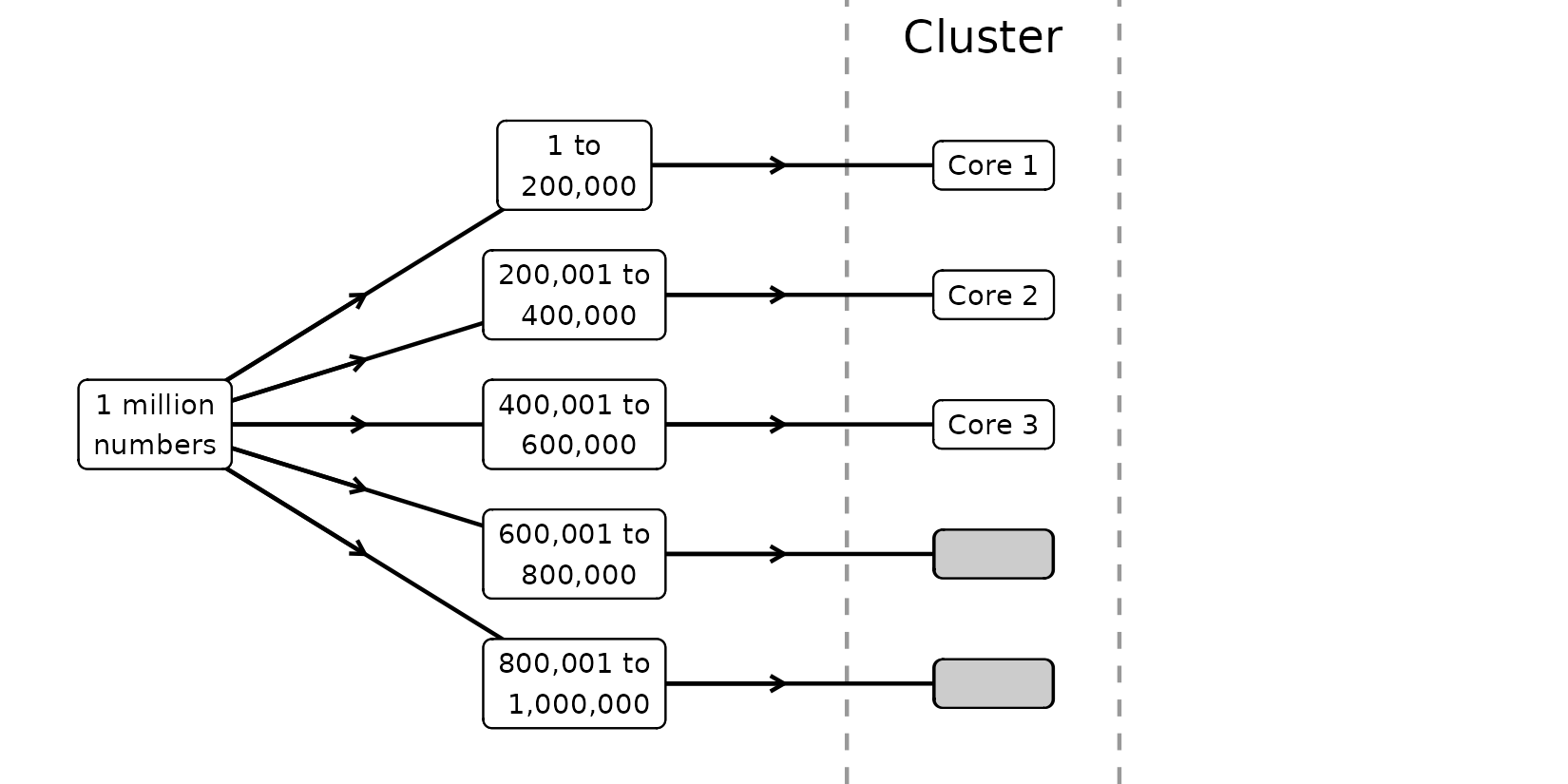
How could we parallelize the square root?
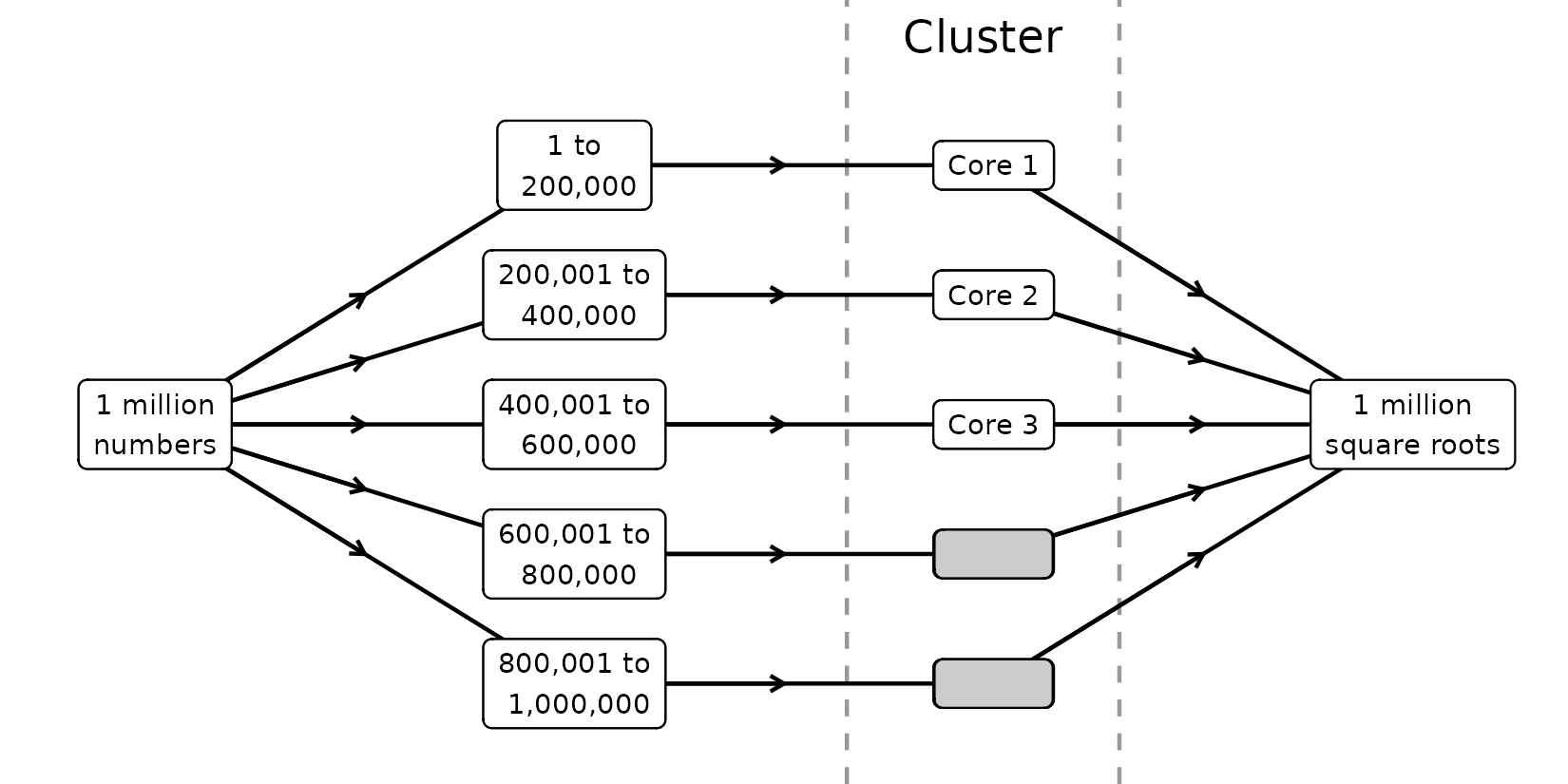
A parallelized numerical operation
The square roots of a million numbers in parallel
library(parallel)my_cluster <- makeCluster(3)start <- Sys.time() sq_roots <- parLapply(my_cluster, numbers, sqrt) end <- Sys.time()stopCluster(my_cluster)end - start
Time difference of 0.8416824 secs
Not as fast as we expected
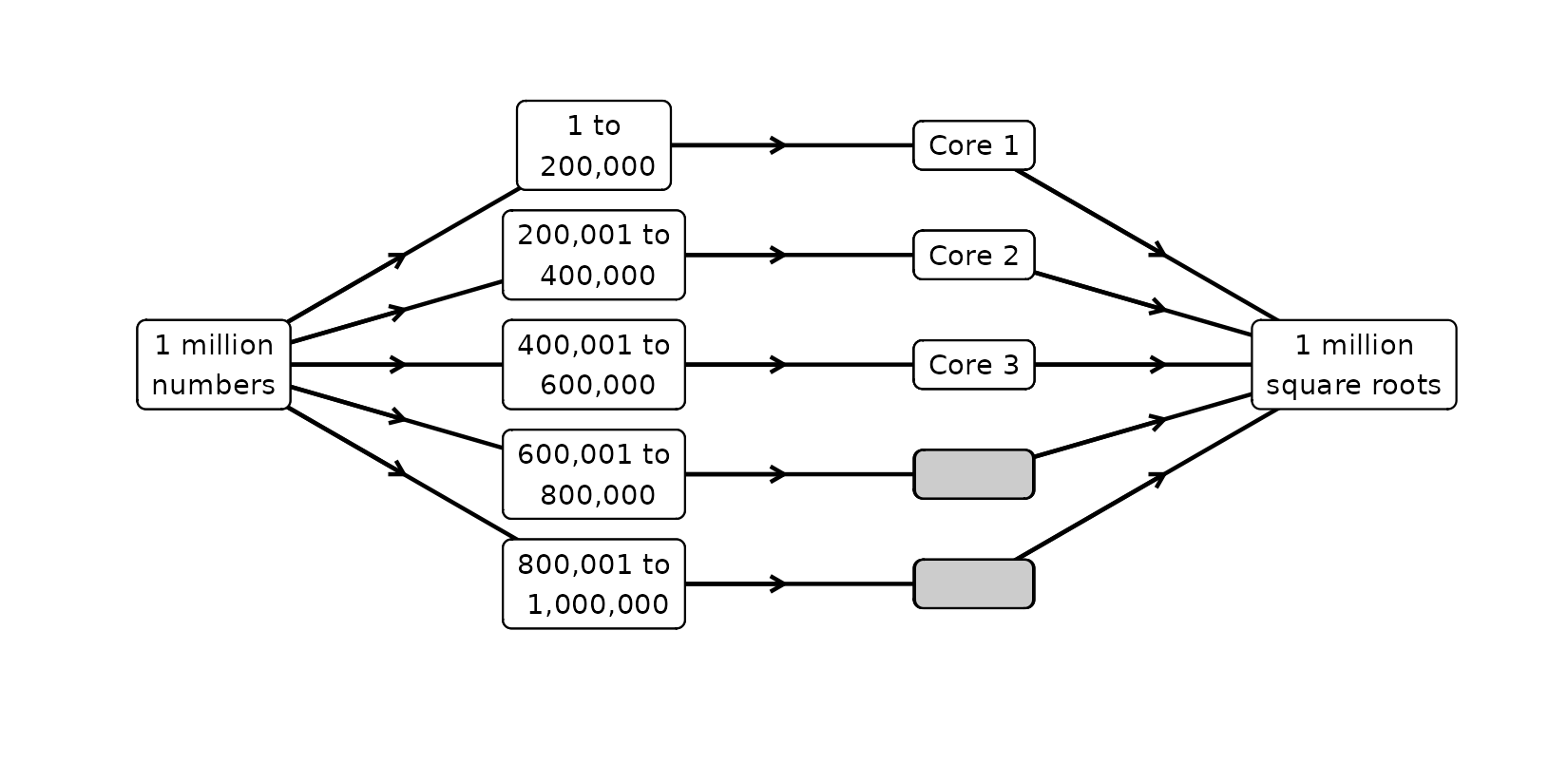
Not as fast as we expected
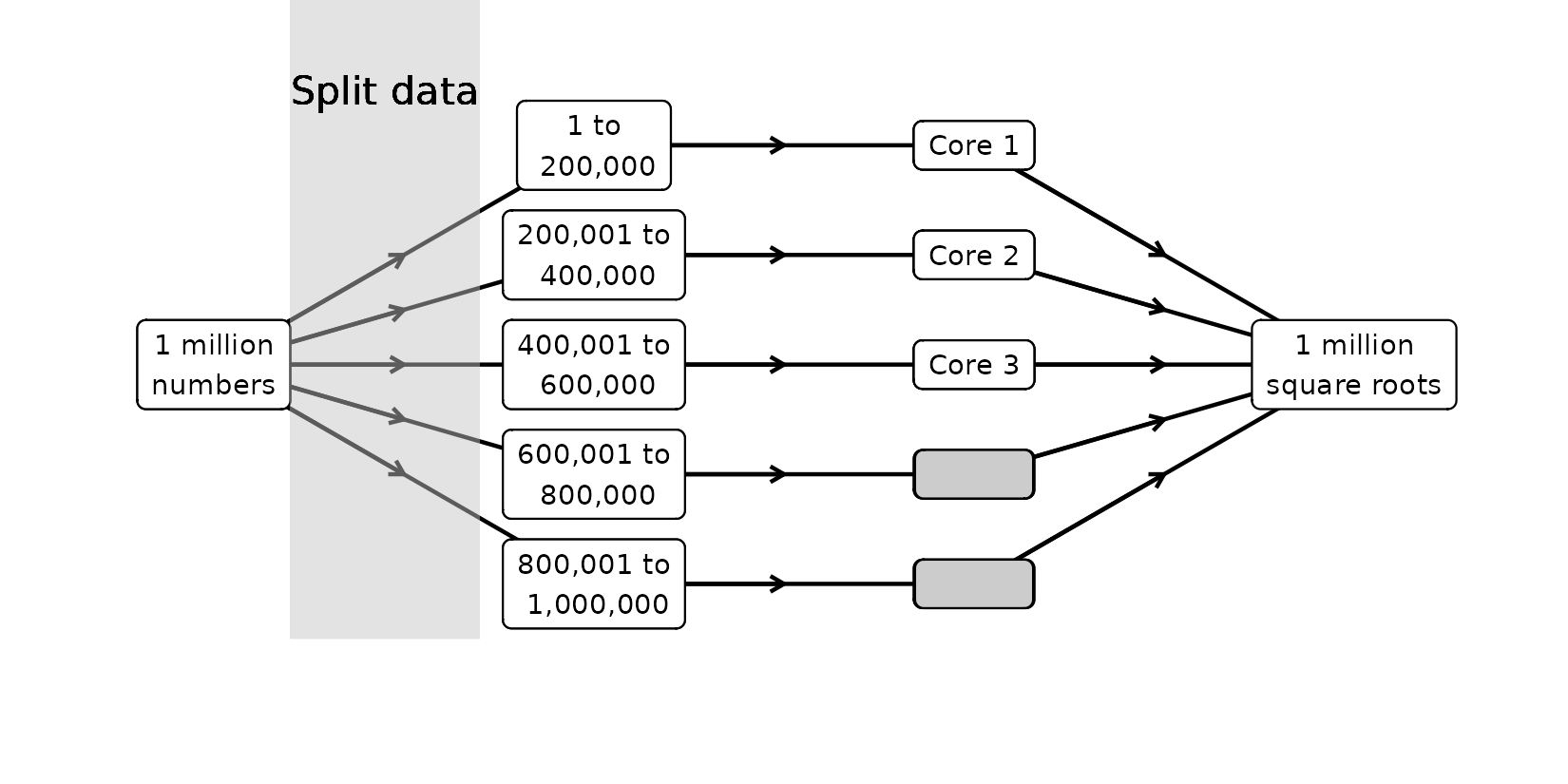
Not as fast as we expected
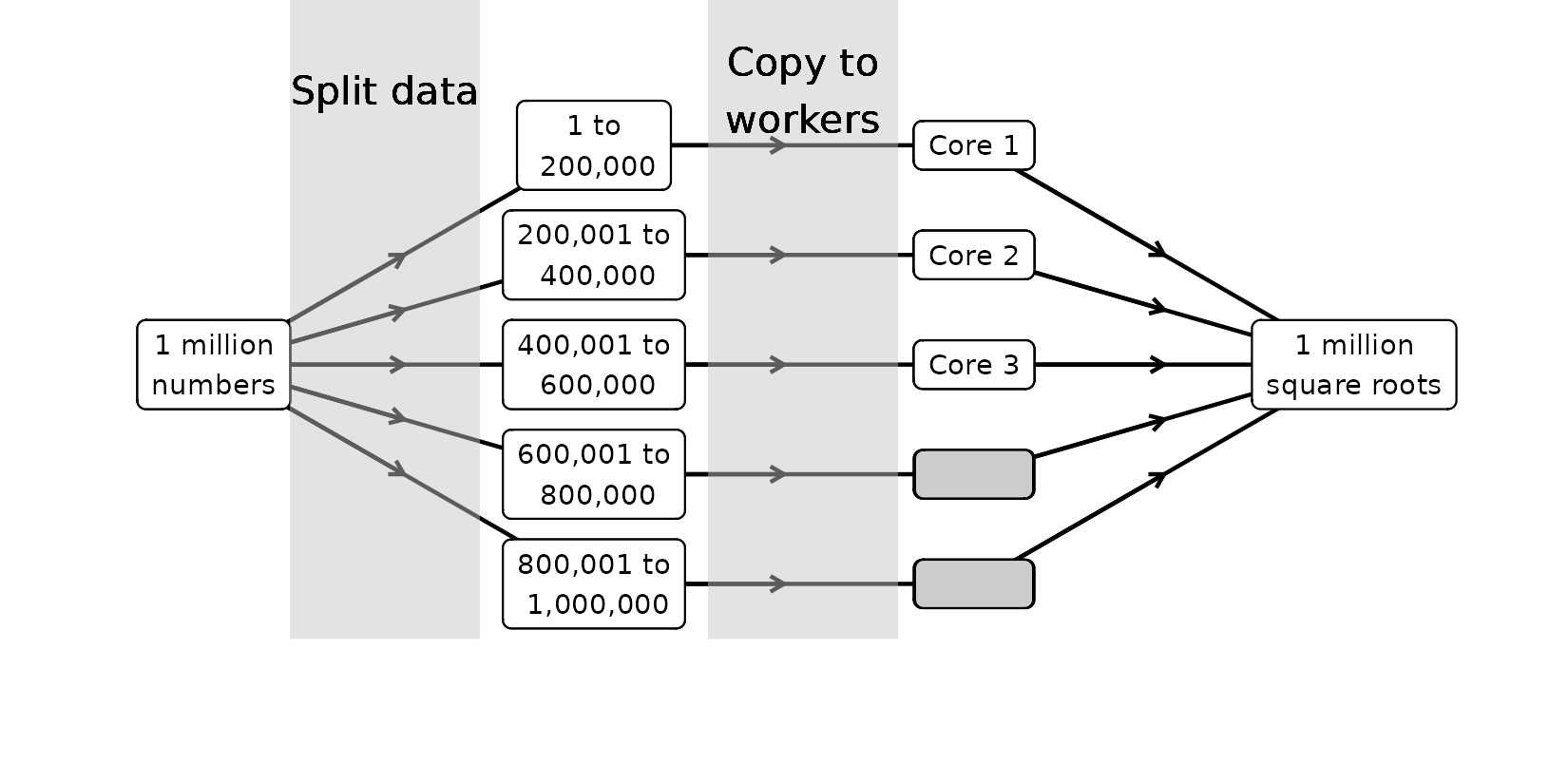
Not as fast as we expected

Not as fast as we expected

So, should we parallelize?
For a sufficiently complex task, consider:
Pros
- Faster than sequential
- More cost-efficient in the long run
Cons
- Requires special programming skills (but you are all set!)
- High memory usage
Let's practice!
Parallel Programming in R

